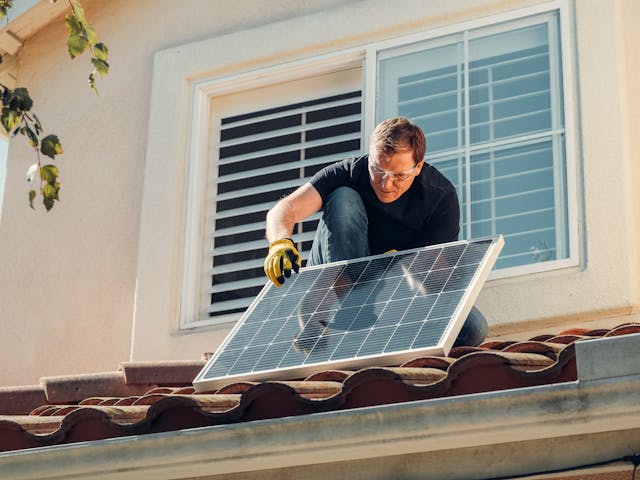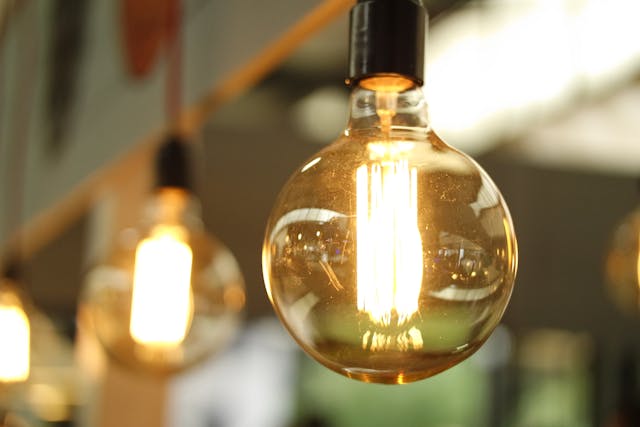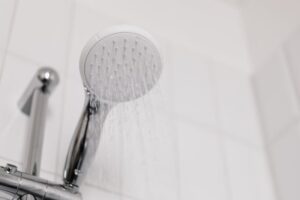Ways to Improve Energy Efficiency in Your Home: A Complete Guide
Introduction: Understanding the Importance of Energy Efficiency
Energy efficiency is a vital aspect of modern homeownership that not only helps in reducing your utility bills but also contributes positively to the environment. There are numerous ways to improve energy efficiency in your home, and each can have a significant impact on your energy consumption and costs. Whether you’re looking to make small adjustments or commit to larger-scale changes, improving energy efficiency can be both cost-effective and beneficial for long-term sustainability.
Implementing energy-efficient practices in your home can help reduce your carbon footprint by lowering greenhouse gas emissions. Additionally, energy-efficient homes are more comfortable, have better insulation, and maintain a consistent temperature. These benefits go hand-in-hand with creating a more eco-friendly environment for your family while also saving money over time. In this article, we will explore ways to improve energy efficiency in your home, providing tips, strategies, and methods that can be implemented immediately.
From sealing air leaks to upgrading appliances, this guide will cover practical steps that will ensure your home uses less energy without sacrificing comfort. Whether you’re just starting or are already on the path toward a more efficient home, this article is packed with valuable information to help you on your journey.
The Role of Insulation in Improving Energy Efficiency
One of the first ways to improve energy efficiency in your home is by enhancing the insulation. Insulation acts as a barrier that keeps warm air inside during the winter and cool air inside during the summer. Proper insulation reduces the amount of energy required to heat or cool your home, leading to significant savings on energy bills.
Types of Insulation:
- Attic Insulation: Most heat loss occurs in the attic. Adding or upgrading attic insulation is one of the most effective ways to improve energy efficiency in your home.
- Wall Insulation: Proper wall insulation can also play a significant role in maintaining your home’s temperature, minimizing the need for constant heating and cooling.
- Floor Insulation: Insulating your floors, especially over crawl spaces, can prevent drafts and help with energy efficiency in your home.
Properly sealing gaps around windows, doors, and walls also enhances insulation, ensuring that energy is not wasted.
Sealing Air Leaks to Improve Efficiency
Another simple yet effective way to improve energy efficiency in your home is by sealing air leaks. Leaks around windows, doors, and ducts can result in the loss of heated or cooled air, making your heating and cooling systems work harder. Identifying and sealing these leaks can dramatically reduce the strain on your HVAC system and save you money.
Common Areas to Check:
- Windows and Doors: Check for drafts around windows and doors. You can use weatherstripping or caulk to seal the leaks.
- Ductwork: Leaky ducts can lead to a significant loss of energy. Having ducts sealed and insulated is one of the best ways to improve energy efficiency in your home.
- Electrical Outlets and Switches: Sometimes, air leaks can occur around electrical outlets. Installing outlet gaskets can help reduce this.
By addressing these small leaks, you’ll prevent warm and cool air from escaping and make your HVAC system more efficient.
Upgrading to Energy-Efficient Appliances
Upgrading to energy-efficient appliances is another impactful way to improve energy efficiency in your home. Modern appliances, such as refrigerators, washing machines, and dishwashers, are designed to use less energy while still offering top-notch performance. These appliances typically come with the ENERGY STAR label, indicating that they meet energy efficiency standards.
Benefits of Upgrading Appliances:
- Lower Energy Bills: New energy-efficient appliances consume less electricity, reducing overall energy costs.
- Improved Performance: These appliances often offer enhanced features like faster operation and quieter performance.
- Environmentally Friendly: Using less energy translates to fewer emissions, making your home more eco-friendly.
Switching to energy-efficient appliances is an investment that pays off in the long run by reducing your home’s carbon footprint.
Smart Thermostats for Optimal Energy Use
Smart thermostats are one of the most popular and effective ways to improve energy efficiency in your home. These devices can be programmed to adjust your home’s temperature based on your schedule and preferences, ensuring that you’re not wasting energy while you’re away or asleep. Smart thermostats can learn your habits and automatically make adjustments to optimize energy use.
Features of Smart Thermostats:
- Remote Control: You can adjust your home’s temperature from anywhere using a smartphone app.
- Energy Reports: Smart thermostats provide insights into your energy usage, helping you identify areas for improvement.
- Geofencing: Some smart thermostats can detect when you’re leaving or returning home and adjust the temperature accordingly.
By reducing energy usage during off-peak times, smart thermostats help you save both energy and money.
Solar Panels and Renewable Energy Sources
For homeowners looking to go green, installing solar panels is one of the best ways to improve energy efficiency in your home. Solar energy is a renewable source of power that can significantly reduce or even eliminate your reliance on traditional electricity. Solar panels capture the sun’s energy and convert it into electricity, providing clean and sustainable energy for your home.
Benefits of Solar Panels:
- Lower Utility Bills: Solar panels generate their own electricity, reducing your reliance on the grid.
- Environmental Impact: Solar energy is a clean, renewable resource that does not produce greenhouse gas emissions.
- Increased Property Value: Homes with solar panels often have higher resale values.
If your home receives enough sunlight, installing solar panels can be a great investment toward long-term energy savings.
Use of Energy-Efficient Lighting
Switching to energy-efficient lighting is a simple and effective way to improve energy efficiency in your home. Traditional incandescent bulbs consume a lot of energy and have a shorter lifespan compared to newer lighting technologies like LED and CFL bulbs. Replacing old bulbs with energy-efficient ones can help reduce your energy consumption without sacrificing brightness.
Types of Energy-Efficient Lighting:
- LED Bulbs: LED lights use significantly less energy than incandescent bulbs and last up to 25 times longer.
- CFL Bulbs: Compact fluorescent lights use less energy than incandescent bulbs and provide a similar level of brightness.
- Smart Lighting: Smart bulbs can be controlled remotely and set to automatically turn off when not needed, further enhancing energy savings.
By upgrading your home’s lighting, you can reduce your electricity usage and contribute to a more sustainable future.
The Importance of Regular Maintenance for HVAC Systems
Regular maintenance of your heating, ventilation, and air conditioning (HVAC) systems is essential for ensuring they operate efficiently. Neglecting HVAC maintenance can lead to higher energy bills and a shorter lifespan for the system. Changing air filters, cleaning ducts, and scheduling annual inspections are key ways to improve energy efficiency in your home.
HVAC Maintenance Tips:
- Change Air Filters: Dirty air filters reduce airflow and force your HVAC system to work harder. Change filters every 1-3 months.
- Clean Ducts: Dust and debris in ducts can block airflow and reduce system efficiency.
- Schedule Regular Inspections: Professional maintenance ensures that your HVAC system is running at its best.
By keeping your HVAC system well-maintained, you can improve its energy efficiency and extend its lifespan.
Conclusion: Effective Ways to Improve Energy Efficiency in Your Home
Incorporating ways to improve energy efficiency in your home not only helps lower your energy bills but also reduces your environmental impact. From enhancing insulation and sealing air leaks to upgrading appliances and incorporating renewable energy sources, every step you take toward energy efficiency is a step toward a more sustainable and cost-effective home.
Whether you’re focused on small changes like replacing light bulbs or larger upgrades such as installing solar panels, there are countless ways to make your home more energy-efficient. As you make these improvements, you’ll start seeing the benefits in both your energy bills and your environmental footprint.
FAQ: Ways to Improve Energy Efficiency in Your Home
Q1: How can I improve energy efficiency in my home without spending a lot of money?
Simple measures like sealing air leaks, using energy-efficient lighting, and adjusting your thermostat can make a big difference without a significant investment.
Q2: How much can I save by improving energy efficiency in my home?
Savings vary depending on the improvements made. On average, homeowners can save 10-30% on energy bills by making energy-efficient changes.
Q3: Are energy-efficient appliances worth the investment?
Yes, while they may have a higher upfront cost, energy-efficient appliances can save you money over time by using less energy.
Q4: How do I know if my home is energy-efficient?
A home energy audit can help identify areas where your home is losing energy, allowing you to target improvements effectively.

Share this:
- Click to share on Facebook (Opens in new window) Facebook
- Click to share on X (Opens in new window) X
- Click to share on LinkedIn (Opens in new window) LinkedIn
- Click to share on Reddit (Opens in new window) Reddit
- Click to share on X (Opens in new window) X
- Click to share on Threads (Opens in new window) Threads
- Click to share on WhatsApp (Opens in new window) WhatsApp




